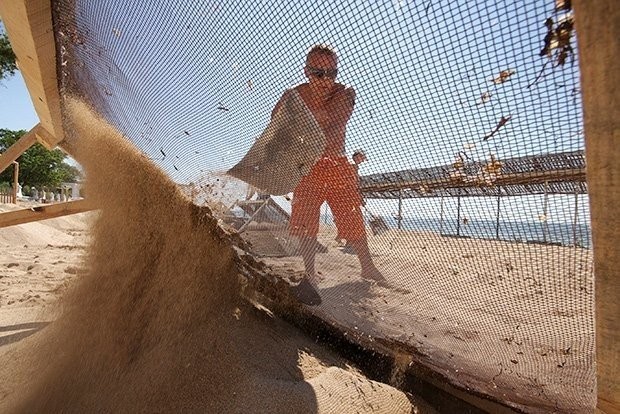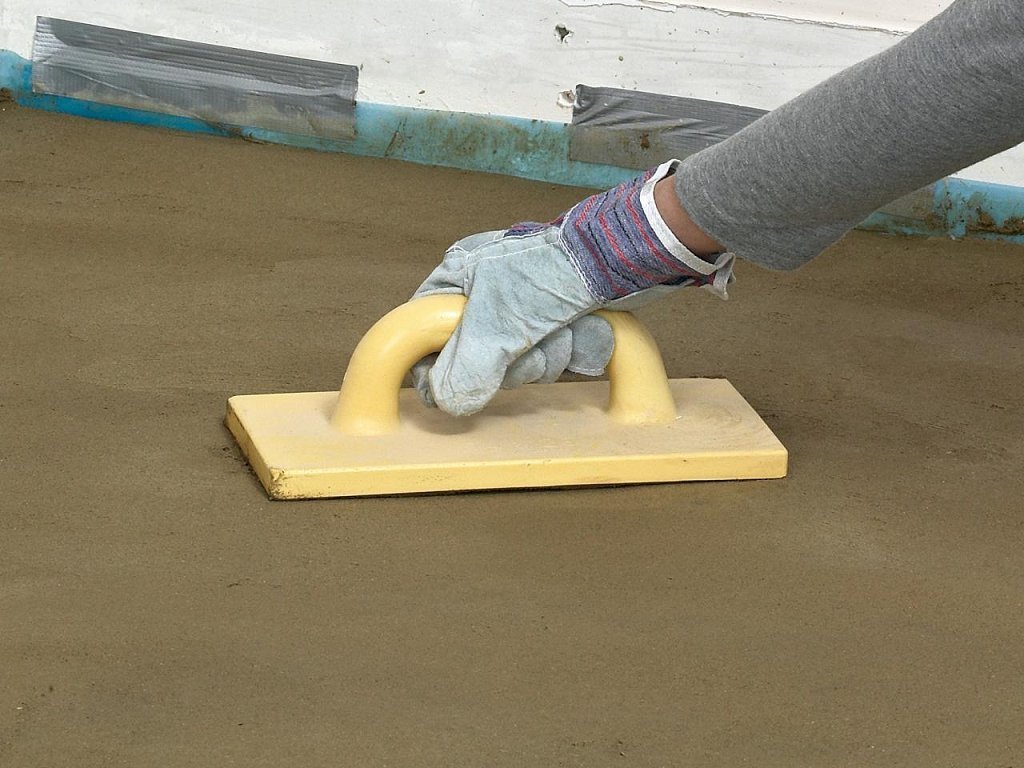Content
- Choose a placeholder for plastering walls
- Quarry and river sand
- Types of cement-sand mortar
- How to sift sand?
- GOST Standards
- The cost of sand aggregate for plaster
Plastering surfaces is an integral part of the decoration of the room. The final result of the repair depends on how well it is performed. If you do all the work yourself, you should know what kind of sand is best suited for plastering walls.

Choose a placeholder for plastering walls
Sand can be called a universal material, since it found its application in all construction works. As you know, it happens river and quarry. On the question of choosing the right sand for stucco, the opinions of experts differ. Some claim that river is preferable, since it does not contain foreign matter, clay and foreign debris. Thanks to this, a better solution and strong adhesion to the wall surface are obtained. Others believe that the presence of clay particles in the material from the quarry gives the mixture a plasticity, so it is easier to apply to the base.
If you are doing ordinary repairs in an apartment, then career aggregate is quite suitable. It turns out that one type of filler makes the solution durable and the other convenient to use. Which one to choose for you - determine for yourself depending on your needs.

It is strongly recommended not to use sand filler, which contains dusty, clay and silty impurities. It should be lump free and clean. For this, the material must first be sieved.
Quarry and river sand
The choice of filler depends on the thickness of the layer to be applied.
For finishing work with a thin layer, it is best to use river sand. Compared to other types of this material, it is environmentally friendly. It is mined from the bottom of the river by a dredger. In such a sandy aggregate there are no clay grains, and practically no stones. With an average particle size of up to 2.2 mm, it does not shrink, which makes it possible to use it for plastering walls and masonry.

If roughing of walls with a thick layer is assumed, then the material of river origin is not recommended. As a result of many years of exposure to water, sharp edges were erased on sand grains. And therefore, it consists of small smooth balls that do not adhere well to the base and to each other.
Sand from the quarry can provide a more durable coating with good adhesion. This ensures a long finish. It owes its origin to weathering. Quarry sand is formed from quartz rocks, mica and feldspar. It is mined in an open way from rocks. The cost of such a filler is much lower than river. When buying plaster material, be sure to check whether it has been flushed or cleaned.
Types of cement-sand mortar
Sand aggregate is divided into types according to the size of grain fractions:
- coarse with a grain size of 2 to 4 mm;
- medium fractional with a grain size of 0.5 to 2 mm;
- fine-grained with a grain size of 0.25 to 0.5 mm.
For the plastering of the walls with your own hands with a cement-sand mortar, medium-fraction sand is usually used. It must be of high quality, without impurities. How much the layer will uniformly and smoothly lay down depends on the size of the grains of sand. The smaller they are, the easier it will be for you to work with the solution. It is perfect for finishing leveling floors or walls. Coarse sand is used for the first (draft) layer of plaster. To prepare the stucco mortar, it is worthwhile to purchase already cleaned and sifted sand.
It is important to know that even with high roughness, the finer it is, the greater the amount of binders and water required to envelop it.
How to sift sand?
To correctly and qualitatively sift the material for a cement-sand mortar, you will need a large sieve or a wooden frame, on which you can pull a mosquito net. If the volume of sand filler is small, then the usual section of unnecessary tulle is quite suitable. Sand for the preparation of mortar for wall plastering must be dry. But if it contains clay impurities, then it must be washed, and then wait until it dries completely.

- Install a sieve on a container in which sand will be poured.
- Pour sand slowly in the form of a slide and then it will be sorted by size. Upstairs will be the smallest. It is great for grouting.
- Throw a sand filler with a shovel on your own. With this method, the fine sand will lie closest, the coarser away, and the pebbles will fly off to the side.
- If there is wind, you can use its help. At the same time, sand is poured from a slightly raised container or tossed up with a shovel. Small will be farthest.

GOST Standards
Not only various products, but also natural materials are subject to standards and norms. To find out if the sand quarry filler meets the requirements of GOST, there are various checks.

The grain composition of the sand filler is determined according to GOST 8736-93. For this, it is sieved through sieves having cells of different sizes: 0.16; 0.315; 0.63; 1.25; 2.5 and 5 mm.
Also determine the resistance of sand to the influence of alkalis. This requirement must be taken into account when manufacturing concrete. There is a list of minerals that cannot be used for building mixtures.
According to GOST 8735, quarry building sand is always treated for the sample with a solution of NaOH (sodium hydroxide). This study is for organic impurities. As a result of the verification, he will not change the color of the mixture to a darker one or which corresponds to the sample.
The cost of sand aggregate for plaster
When making repairs, people usually try to immediately make an estimate of the cost of buying building materials. The cost of sand is relatively low, but when you take into account all the costs, do not forget about investments in its purchase.
You should be aware that the higher the price of the material, the more actions that have been done with it during washing and production. One of the economical options is a career not washed and not seeded. Its cost per 1 m3 is from 350 to 450 rubles. Sifted or water-purified sand filler for construction work will cost from 600 to 750 rubles per 1 m3 + delivery.
The cost of river sand is much higher than quarry. The cost of its purchase will be from 800 to 1000 rubles per 1 m3.
The most expensive material is fractionated quartz filler. Buying from 10 tons with delivery will cost about 4,800 rubles per 1 m3.


